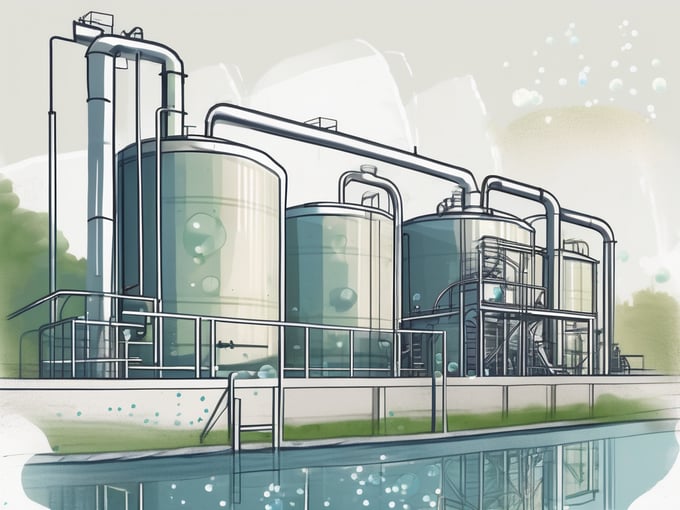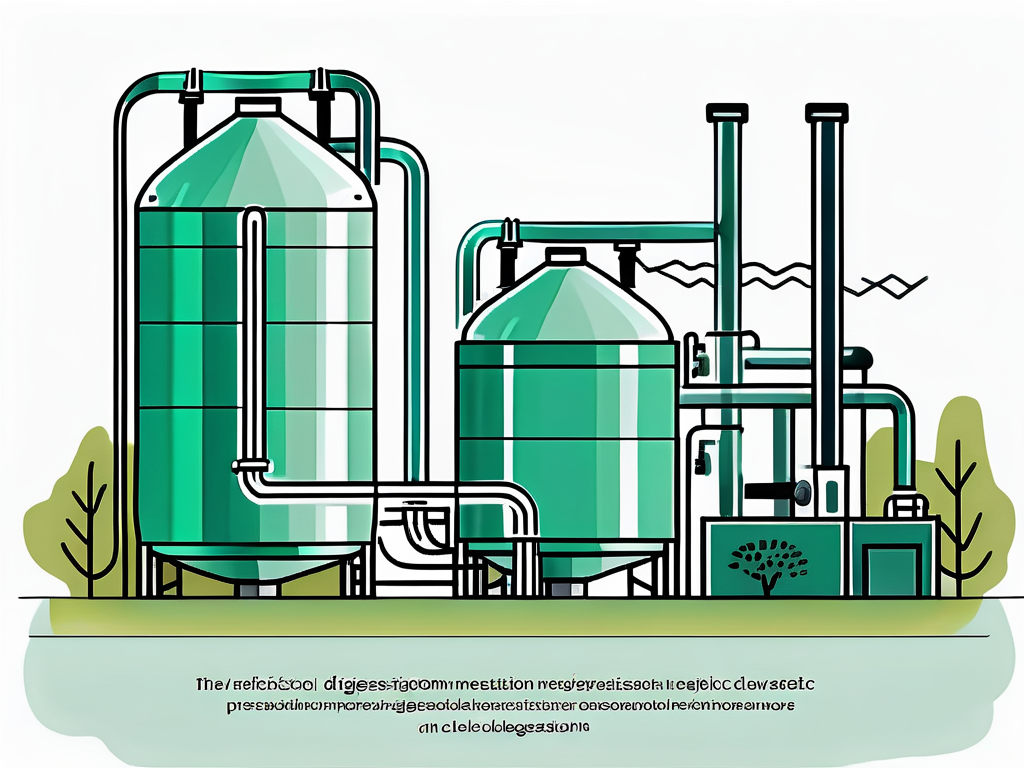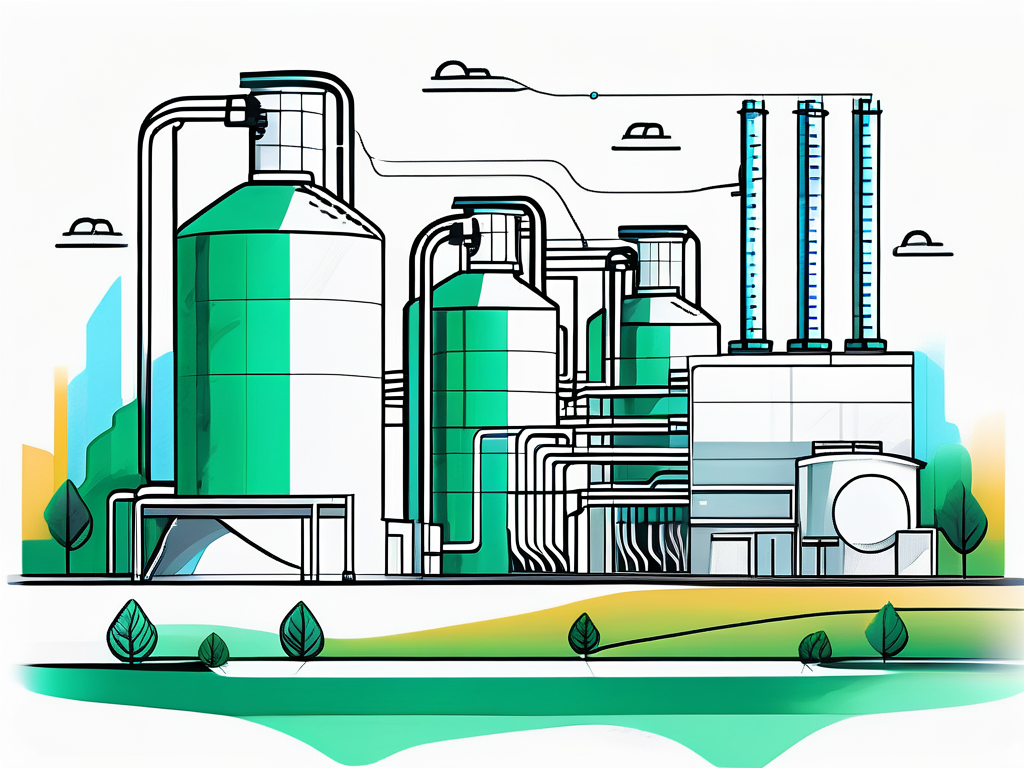
Aerobic Digestion: Wastewater Treatment Explained
Aerobic digestion is a critical process in the treatment of wastewater. It is a biological method that uses oxygen and microorganisms to break down organic matter present in wastewater. This process is essential in reducing the volume of sludge, eliminating pathogens, and converting organic materials into stable substances.
The term 'aerobic' refers to the presence of oxygen, which is a vital component in the process. The microorganisms involved in the digestion process require oxygen to survive and perform their function of breaking down organic matter. The process is termed 'digestion' because it involves the decomposition of organic matter, similar to the digestion process in living organisms.
Process of Aerobic Digestion
Aerobic digestion involves several steps, each crucial to the overall effectiveness of the process. The steps include initial sludge concentration, aeration, and final sludge disposal. The process begins with the concentration of sludge, which involves the removal of water to increase the concentration of organic matter. This is typically achieved through sedimentation or centrifugation.
Following the concentration step, the sludge is aerated to provide the necessary oxygen for the microorganisms. Aeration can be achieved through mechanical or diffused air systems. Mechanical systems involve the use of rotating devices to mix the sludge and introduce air, while diffused air systems use air bubbles to provide oxygen and mix the sludge.
Stages of Aerobic Digestion
The aerobic digestion process can be divided into two main stages: the active phase and the endogenous phase. The active phase is characterized by the rapid consumption of organic matter by the microorganisms. During this phase, the microorganisms multiply rapidly, leading to a significant reduction in the volume of sludge.
The endogenous phase follows the active phase. During this phase, the rate of organic matter consumption slows down as the microorganisms start to consume their own cells due to the depletion of readily available organic matter. This phase is characterized by a further reduction in sludge volume and the stabilization of the remaining sludge.
Types of Aerobic Digestion
There are two main types of aerobic digestion: conventional aerobic digestion and autothermal thermophilic aerobic digestion (ATAD). The choice between the two depends on several factors, including the nature of the sludge, the desired level of sludge stabilization, and the available resources.
Conventional aerobic digestion is the most common type and involves the use of ambient air to provide the necessary oxygen for the microorganisms. This type of digestion is typically carried out at mesophilic temperatures (15-40°C). On the other hand, ATAD involves the use of elevated temperatures (50-65°C) to enhance the digestion process. The high temperatures in ATAD are achieved through the metabolic heat produced by the microorganisms.
Conventional Aerobic Digestion
Conventional aerobic digestion is a widely used method for the treatment of wastewater. It is a cost-effective and reliable method that can achieve a significant reduction in sludge volume and the elimination of pathogens. The process involves the use of mechanical or diffused air systems to provide the necessary oxygen for the microorganisms.
The effectiveness of conventional aerobic digestion depends on several factors, including the concentration of sludge, the duration of aeration, and the temperature. The process requires careful monitoring and control to ensure optimal conditions for the microorganisms and to prevent the over-aeration of the sludge, which can lead to the loss of valuable nutrients.
Autothermal Thermophilic Aerobic Digestion (ATAD)
ATAD is a more advanced method of aerobic digestion that offers several advantages over conventional aerobic digestion. The process involves the use of high temperatures to enhance the digestion process and achieve a higher level of sludge stabilization. The high temperatures in ATAD are achieved through the metabolic heat produced by the microorganisms, hence the term 'autothermal'.
The high temperatures in ATAD not only enhance the digestion process but also help in the elimination of pathogens, making the process particularly suitable for the treatment of wastewater with a high pathogen load. However, ATAD requires more sophisticated equipment and control systems compared to conventional aerobic digestion, which can increase the cost of the process.
Advantages and Disadvantages of Aerobic Digestion
Aerobic digestion offers several advantages over other methods of wastewater treatment. The process is capable of achieving a significant reduction in sludge volume, which can reduce the cost of sludge disposal. Additionally, the process can eliminate pathogens, making the treated sludge safe for disposal or reuse.

However, aerobic digestion also has its disadvantages. The process requires a significant amount of energy for aeration, which can increase the cost of the process. Additionally, the process can lead to the loss of valuable nutrients through the volatilization of nitrogen and the oxidation of phosphorus.
Advantages of Aerobic Digestion
One of the main advantages of aerobic digestion is its ability to achieve a significant reduction in sludge volume. This can reduce the cost of sludge disposal and make the process more economical. Additionally, the process can convert organic matter into stable substances, reducing the potential for odor problems.
Another advantage of aerobic digestion is its ability to eliminate pathogens. This makes the treated sludge safe for disposal or reuse. The process can also be easily controlled and monitored, making it a reliable method for the treatment of wastewater.
Disadvantages of Aerobic Digestion
One of the main disadvantages of aerobic digestion is its high energy requirement. The process requires a significant amount of energy for aeration, which can increase the cost of the process. Additionally, the process can lead to the loss of valuable nutrients through the volatilization of nitrogen and the oxidation of phosphorus.
Another disadvantage of aerobic digestion is the potential for odor problems. Although the process can convert organic matter into stable substances, the breakdown of certain organic compounds can produce unpleasant odors. However, these odors can be controlled through proper process control and the use of odor control technologies.
Applications of Aerobic Digestion
Aerobic digestion is used in a wide range of applications, including municipal wastewater treatment, industrial wastewater treatment, and the treatment of agricultural waste. The process is particularly suitable for the treatment of wastewater with a high organic load, as it can achieve a significant reduction in sludge volume and the elimination of pathogens.
In municipal wastewater treatment, aerobic digestion is used to treat the sludge produced during the primary and secondary treatment processes. The treated sludge can be safely disposed of or reused, for example, as a soil conditioner. In industrial wastewater treatment, aerobic digestion is used to treat the sludge produced during the treatment of industrial effluents. The process can also be used in the treatment of agricultural waste, such as animal manure, to produce a stable end product that can be safely disposed of or reused.
Municipal Wastewater Treatment
In municipal wastewater treatment, aerobic digestion is used to treat the sludge produced during the primary and secondary treatment processes. The process can achieve a significant reduction in sludge volume, making it a cost-effective method for sludge treatment. Additionally, the process can eliminate pathogens, making the treated sludge safe for disposal or reuse.
The treated sludge can be reused in several ways, including as a soil conditioner or a source of nutrients for plants. The reuse of treated sludge can contribute to the sustainability of the wastewater treatment process and reduce the environmental impact of sludge disposal.
Industrial Wastewater Treatment
In industrial wastewater treatment, aerobic digestion is used to treat the sludge produced during the treatment of industrial effluents. The process can handle a wide range of organic loads, making it suitable for the treatment of industrial effluents with a high organic content.
The treated sludge can be safely disposed of or reused, depending on the nature of the sludge and the local regulations. The reuse of treated sludge can contribute to the sustainability of the industrial process and reduce the environmental impact of sludge disposal.
Agricultural Waste Treatment
Aerobic digestion can also be used in the treatment of agricultural waste, such as animal manure. The process can convert the organic matter in the waste into stable substances, reducing the potential for odor problems and the risk of water pollution.
The treated waste can be safely disposed of or reused, for example, as a soil conditioner or a source of nutrients for plants. The reuse of treated waste can contribute to the sustainability of agricultural practices and reduce the environmental impact of waste disposal.
Future of Aerobic Digestion
The future of aerobic digestion looks promising, with ongoing research and development aimed at improving the process and overcoming its limitations. Key areas of focus include energy efficiency, nutrient recovery, and odor control.

Energy efficiency is a major concern in aerobic digestion, due to the high energy requirement for aeration. Research is being conducted to develop more efficient aeration systems and to explore the potential of energy recovery from the digestion process. Nutrient recovery is another area of focus, with efforts being made to develop methods for the recovery of valuable nutrients from the digestion process. Odor control is also a key area of research, with the aim of developing more effective odor control technologies and strategies.
Energy Efficiency
Improving the energy efficiency of aerobic digestion is a key area of research. The high energy requirement for aeration is a major limitation of the process, and efforts are being made to develop more efficient aeration systems. Additionally, research is being conducted to explore the potential of energy recovery from the digestion process, for example, through the production of biogas.
One promising approach is the use of high-efficiency diffused air systems, which can provide the necessary oxygen for the microorganisms while minimizing the energy requirement for aeration. Another approach is the use of advanced control systems, which can optimize the aeration process and reduce the energy requirement.
Nutrient Recovery
Nutrient recovery is another key area of focus in the development of aerobic digestion. The process can lead to the loss of valuable nutrients through the volatilization of nitrogen and the oxidation of phosphorus. Efforts are being made to develop methods for the recovery of these nutrients from the digestion process.
One promising approach is the use of advanced treatment processes, such as struvite precipitation, which can recover phosphorus from the digestion process. Another approach is the use of biological nutrient removal processes, which can recover nitrogen and phosphorus from the digestion process.
Odor Control
Odor control is a key area of research in the development of aerobic digestion. The breakdown of certain organic compounds during the digestion process can produce unpleasant odors, which can be a major issue in the operation of aerobic digestion facilities.
Efforts are being made to develop more effective odor control technologies and strategies. One promising approach is the use of advanced process control, which can optimize the digestion process and minimize the production of odor-causing compounds. Another approach is the use of odor control technologies, such as biofilters and activated carbon filters, which can remove odor-causing compounds from the air.



